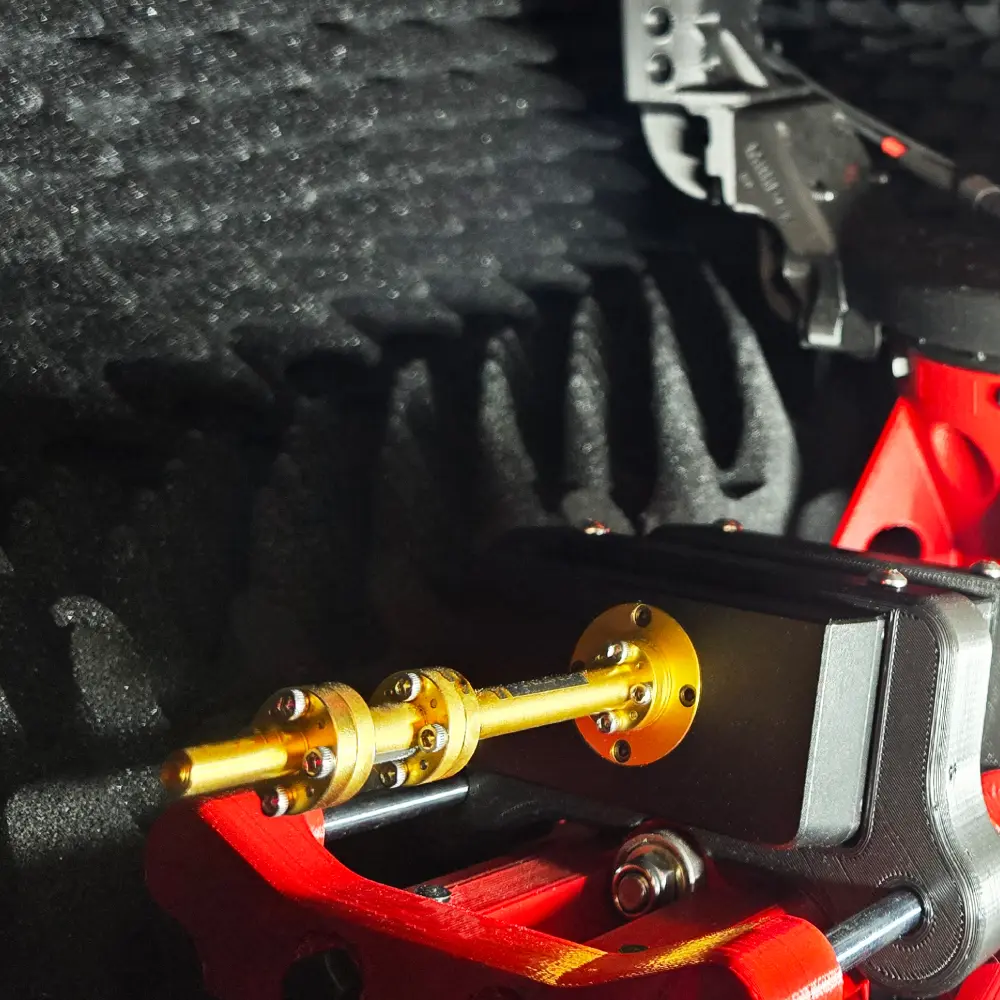MBX32CTR – compact antenna test range (CATR) for mmWave and sub-THz antenna testing up to 330GHz
MBX32CTR is a practical solution for antenna designs requiring extended far field distance. With an integrated CATR parabolic reflector and probe, MBX32CTR offers solutions from 18GHz to 330GHz for DUTs up to 15cm/6″ wide.
When ordering MBX32CTR, a frequency range selection is required to get the right feed horn/probe system for your application.
You may also be interested in...
-

GIM04E – sub-THz HV positioner with frequency extender mount
Add to Quote This product has multiple variants. The options may be chosen on the product page -

MBX3x – 30″ section modular anechoic chambers for mmWave and sub-THz antenna testing
Add to Quote This product has multiple variants. The options may be chosen on the product page -

EXTxx VNA frequency extender kit
Add to Quote This product has multiple variants. The options may be chosen on the product page
MBX32CTR COMPACT ANTENNA TEST RANGE- is the right solution when the desired far-field distance exceeds dimensions that can be achieved by standard sized systems like MBX34. Because it uses a parabolic reflector and a matching probe antenna placed at the focal point, the measurement distance between the probe and the DUT becomes virtually infinite and allows for RF measurements to be done using chambers that are much smaller than the calculated far-field distance of the DUT. This innovative solution is offered from 18GHz to 54GHz with coaxial wiring of the DUT and probe, while from 54GHz to 330GHz, it is equipped with built-in su9pport for VNA frequency extenders with wave-guide interfaces. MBX32CTR is a complete solution for mmWave and sub-THz OTA measurement with a quiet zone of 150mm. This package includes an MBX32 chamber, a GIM04H-300/GIM04H-300E 2-axis positioner, a laser alignment system, a 300mm parabolic reflector, and its focus probe antenna.
MBX32 CHAMBER- MBX32 is ideally placed on a 6-ft lab bench. Its 22” cavity size, which is the free space between absorber panels, provides enough space for the 300mm reflector and GIM04-300/GIM04-300E positioner. As with other configurations, the wiring of the probe and the DUT is done through the chamber deck and conveniently attach to the measurement instrument placed in the two available bays.
PARABOLIC REFLECTOR AND PROBE – are the key elements of MBX32CTR. The reflector and the probe are carefully designed by Eravant and are aligned with the laser alignment kit provided to ensure the probe is exactly at the focus point of the reflector. This allows for the direct conversion of near field signal from the DUT on the positioner into far field measurements. The reflector is edge roll type precision machined and polished. The probe selection must match the waveguide size suitable for the desired frequency, typically 18GHz to 330GHz.













